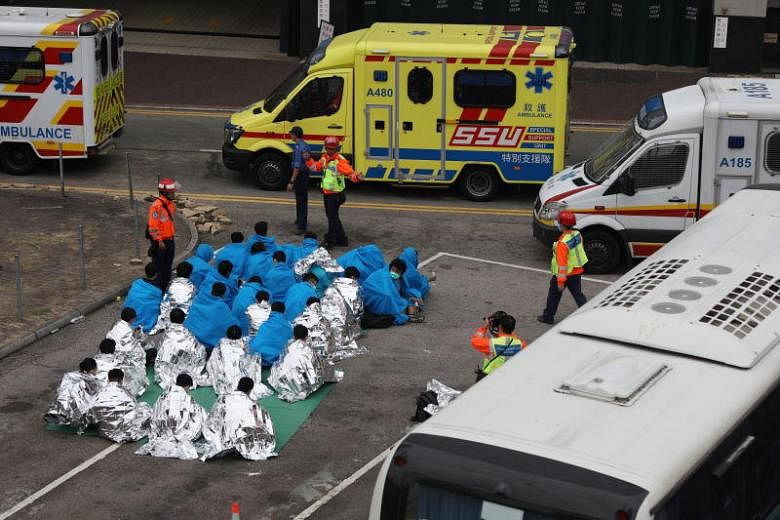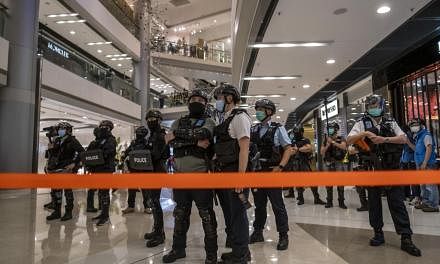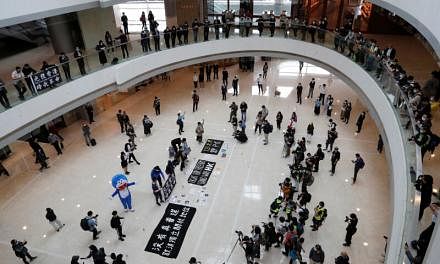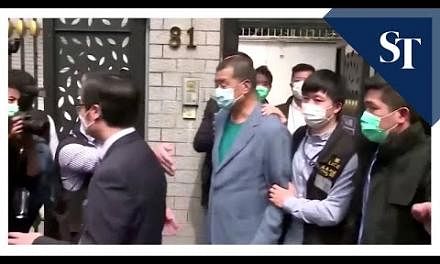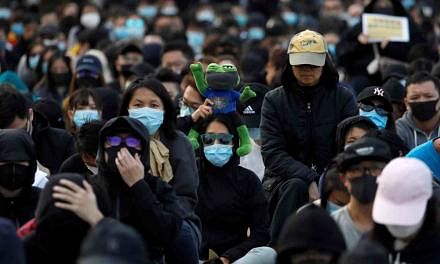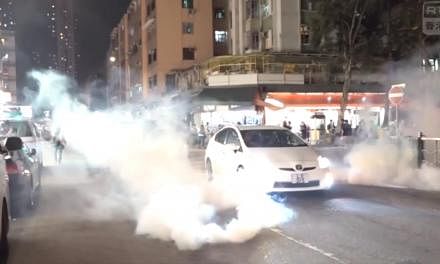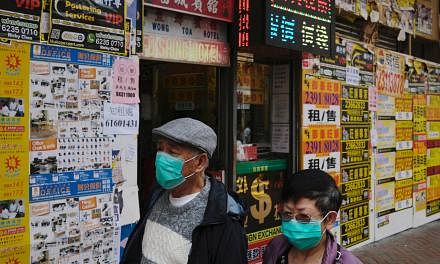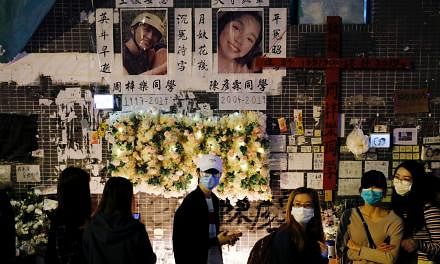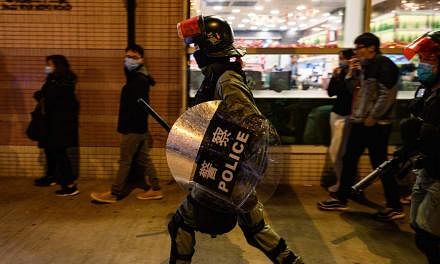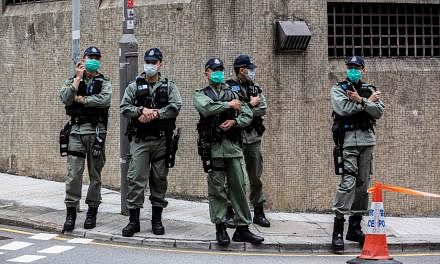HONG KONG (REUTERS) - For three days this past week, anti-government protesters camped out at Hong Kong's sprawling Polytechnic University, prepared for what they feared might be a bloody, even deadly, battle with police.
In the university's heart, littered with smashed glass and covered in revolutionary graffiti spray-painted on the walls, the black-clad demonstrators in gas masks sawed metal poles into batons and practised firing rocks from a makeshift catapult.
Nearby, others ferried around crates of petrol bombs and wrapped arrows in cloth to set aflame.
Last Saturday (Nov 16), the battle began as police moved in to clear the campus and the protesters responded with barrages of rocks and petrol bombs, leaving parts of the university in flames.
After more than five months of protests calling for greater democratic freedoms amid growing anxiety over Chinese influence in Hong Kong, the demonstrations have taken a sudden and dangerous turn, engulfing the city's universities for the first time.
On five campuses in the Chinese-ruled territory, students armed with mediaeval-type weaponry turned their universities into rebel fortresses, amid a growing sense by many that sustained peaceful protests were futile.
On the other side of the barricades and beyond the flames of burning debris were lines of riot police, armed with batons, tear gas and rubber bullets.
Most of the universities were cleared of demonstrators by the weekend. But the showdown between police and demonstrators at Polytechnic University (PolyU) was still grinding on Tuesday as officers maintained a siege around the campus, where about 100 protesters were holed up.
During the past week, Reuters journalists covered the violent confrontations at four Hong Kong universities, including PolyU, as an increasingly militant protest movement suddenly shifted tactics.
'FIRE MAGICIANS' AND CATAPULTS
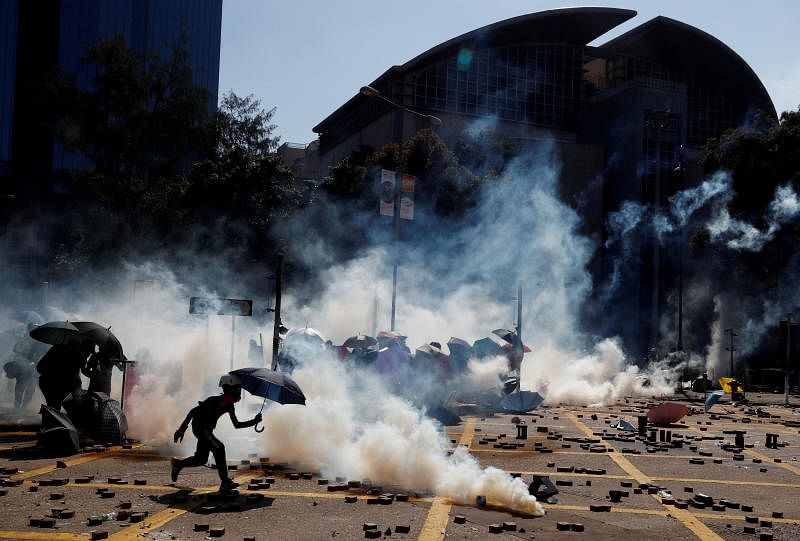
Towards the end of last week, as many as a thousand students occupied the PolyU campus. But the numbers dwindled over the next two days, as protesters feared police would lay siege to the campus.
The preparations, though, did not abate. In the cafeteria, tables were laden with supplies - mountains of bottled water, energy drinks, chocolate, torches, toothbrushes and power banks.
Outside, a team produced petrol bombs, while the university's archery team gave impromptu lessons on how to draw a bow.
Teams of "fire magicians", tasked with lobbing petrol bombs at police on the front lines, practised by throwing empty bottles into the university's drained swimming pool.
The campus is located in a strategic spot next to the Cross-Harbour Tunnel, a major artery linking the Kowloon peninsula to Hong Kong island that had been barricaded by protesters. One aim of the PolyU occupation was keeping the tunnel shut, protesters said.
Demonstrators who streamed into the university last week encountered what had become a small on-campus village.
Hot food was served in the cafeteria, where signs were posted asking media not to take photographs so that weary young men and women could shed their masks to eat and chat. Nearby, others napped on yoga mats spread across a basketball court.
Among the protesters, there was also a growing sense of foreboding about the looming battle with police.
"Once you come out, you know that anything can happen, especially when you are on the front line, even real bullets," said Chen, a 21-year-old student and one of the "fire magicians".
Preparing for the worst, Chen, who only provided his surname, said he had recently penned a will.
The campus occupations began on Nov 11 after police shot an anti-government protester during a demonstration.
Widespread street protests in Hong Kong escalated in June after an eruption of public anger over perceived encroachments on Hong Kong's autonomy by the Chinese government.
The trigger was a Bill introduced by Hong Kong's government that would have allowed the extradition of suspects to the mainland for trial.
The Bill has since been withdrawn, but anger has only grown over the government's perceived indifference to the demands of the protesters, which include an independent investigation into alleged police brutality and an amnesty for arrested protesters.
Hong Kong's leader, Mrs Carrie Lam, has said she would not be swayed by violence to yield to the demands of protesters.
On Tuesday, she said she hoped the university stand-off would end soon, and that she was shocked that campuses had transformed into "weapons factories".
In response to questions from Reuters, Mrs Lam's office said: "The Chief Executive has made it clear on various occasions that violence is not a solution to any problem."
The Hong Kong Police Force did not respond to questions from Reuters.
CHANGED TACTICS

Fears that police were preparing to enter universities and arrest students involved in protests sparked an online appeal to protect campuses, attracting an influx of young protesters.
Once on campus, they began preparing weapons and fire bombs, and blocking key adjacent roads that prevented people from getting to work, in an effort to engineer a general strike.
And they dug in.
That marked a significant tactical shift for the protesters, whose motto has been "be like water", a philosophy about being flexible that has underpinned the leaderless wildcat protests.
The protesters had utilised Hong Kong's topography to their advantage, gathering on busy urban streets with plenty of escape routes, making it difficult for the police to arrest more than a few at a time.
The PolyU occupiers set up barricades and walls of brick and cement of their own making.
But hunkering down meant they would be trapped on campus, with police standing by ready to make arrests on charges carrying heavy prison sentences: rioting, trespassing and theft of public property.
Police began their siege of PolyU last Saturday. By Tuesday, they said that they had "arrested and registered" about 1,100 people in and around the university.
Some people tried slipping out past the police cordons in dramatic fashion: through the sewers, or abseiling down a rope hanging from a bridge.
But a hard core of about 100 remained, according to Reuters estimates.
AN APPETITE FOR VIOLENCE

On Tuesday, new Hong Kong police chief Chris Tang called for support from all citizens to help end the unrest by condemning acts of violence.
Many of the protesters interviewed at university campuses over the past week expressed a sense of futility, saying non-violent opposition was not proving effective.
"We are not destroying things for nothing," said Yip, a 21-year-old PolyU student, standing amid the protest debris on campus. She gave only her surname.
"This is the only way we can fight for freedom."
Others said they were frustrated by the fact that nothing had happened after the "Umbrella Protest" of 2014, when protesters occupied city streets for 11 weeks. The call for greater democracy had been followed by an erosion of freedoms in the city, they said.
Most said their tactics were justified in the face of what they see as brutal force used by the police to quell the protests.
"We are just doing this to protect ourselves," said Chen, the "fire magician".
"I don't think we are using violence, we are just policing the police."
Lee, a 20-year-old nursing student, joined the protests in June, taking to the streets to peacefully demonstrate against the extradition Bill.
Last Saturday afternoon, she sat on a terrace at PolyU where young men and women hurled petrol bombs at the police on the street below.
Unlike the protesters around her, Lee's face, under a pair of pigtails, was not covered - she'd taken off her mask to sip at a juice box.
Asked about the violence, she said of the police: "They are not following the rules - every time we try to be peaceful, they create new problems.
"There has to be someone here to defend the things we deserve," she said.
Later that evening, four young men with metal-tipped arrows rushed out to the same spot, drew back the strings of their bows and sent the missiles hurtling into the darkness towards the police beyond the barricades.
TENSE WAIT AT UNIVERSITY

The campus occupation movement began at the Chinese University of Hong Kong, located beyond the mountains that loom over Kowloon in the New Territories.
On Nov 11, hundreds of protesters there began constructing barricades on campus and blocked off a nearby highway with bricks and branches.
After a stand-off of several days, the police moved in, breaking up barricades and unleashing tear gas. Protesters let loose a hail of petrol bombs, setting fire to a bridge that crossed the highway.
From the Chinese University, the protests spread rapidly to other campuses, including PolyU.
Over the course of last week, police managed to mostly clear protesters from the universities - except from PolyU.
For several days, protesters at the university waited for the onslaught from police. Then, last Saturday the police finally made a move, blocking streets and firing volleys of tear gas.
Next came water cannon that sprayed the university grounds with streams of blue dye that contained an irritant that makes the skin itch. Protesters who had been soaked stripped to their underwear as their comrades hosed them down.
About 100 demonstrators wielding umbrellas and petrol bombs led a charge against the police lines, backed by the deployment of their makeshift weapons behind them, as local residents gathered on street corners to watch.
One police officer was rushed to hospital after being shot in the leg with an arrow.
On Sunday, as a government helicopter circled the campus, the police adopted a new strategy, sealing off surrounding roads to prevent protesters escaping. Officers warned they were ready to use live bullets if protesters used lethal weapons.
Thirty-eight people were injured in the siege, amid barrages of tear gas, water cannon and petrol bombs. A police van and the university entrance were set ablaze.
By Tuesday, there appeared to be only about 100 protesters left at the university.
One of them, a man who gave his name as Sun, said he wasn't planning to leave.
"There are people out there who have been beaten till their heads were bloodied, it's not fair to them," he said.
"Those who are staying here, we've got to hold out."


